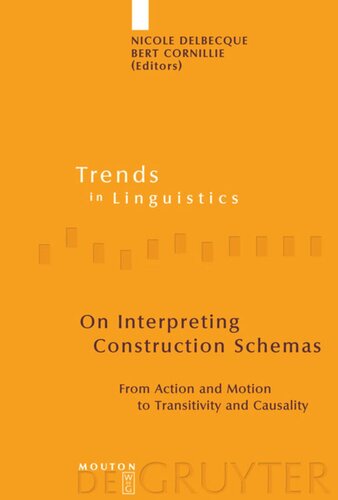

Most ebook files are in PDF format, so you can easily read them using various software such as Foxit Reader or directly on the Google Chrome browser.
Some ebook files are released by publishers in other formats such as .awz, .mobi, .epub, .fb2, etc. You may need to install specific software to read these formats on mobile/PC, such as Calibre.
Please read the tutorial at this link: https://ebookbell.com/faq
We offer FREE conversion to the popular formats you request; however, this may take some time. Therefore, right after payment, please email us, and we will try to provide the service as quickly as possible.
For some exceptional file formats or broken links (if any), please refrain from opening any disputes. Instead, email us first, and we will try to assist within a maximum of 6 hours.
EbookBell Team

4.8
14 reviewsThis volume addresses the constructional variability with transitive and causative verbs from the point of view of their respective action and motion patterns. Drawing on the theoretical advances registered in cognitive approaches to language (Cognitive Grammar, Construction Grammar and space semantics), the papers substantiate new interpretations and adduce empirical evidence from various languages to refine or adjust existing analyses of transitivity and causation.
The different contributions all address the crucial question of how concrete and abstract notions of human behavior drive linguistic expressions. Cognitive linguists consider that linguistic competence functions in terms of complex conceptual units: the native speaker knows and manipulates conceptual blocks without paying further attention to their constitutive parts or their internal organization. However, as this volume illustrates, the role of the constitutive parts and their internal organization cannot simply be reduced to zero. A multidimensional approach to construction schemas is at stake. That is, the speaker applies proper embodied subroutines to build a coherent meaning, but the construction schemas are also rooted in the linguistic patterns the speaker and hearer are familiar with.
The volume is primarily intended for scholars working within cognitive-semantic research at large. Given its theoretical and applied character (in the sense of giving empirical evidence for specific problems in the grammar), the volume will also be of great interest to anyone concerned with syntactic processes, construction grammar or with the cognitive structure of discourse. The descriptive and theoretical insights indeed dwell on areas that are currently dealt with in modern linguistics.